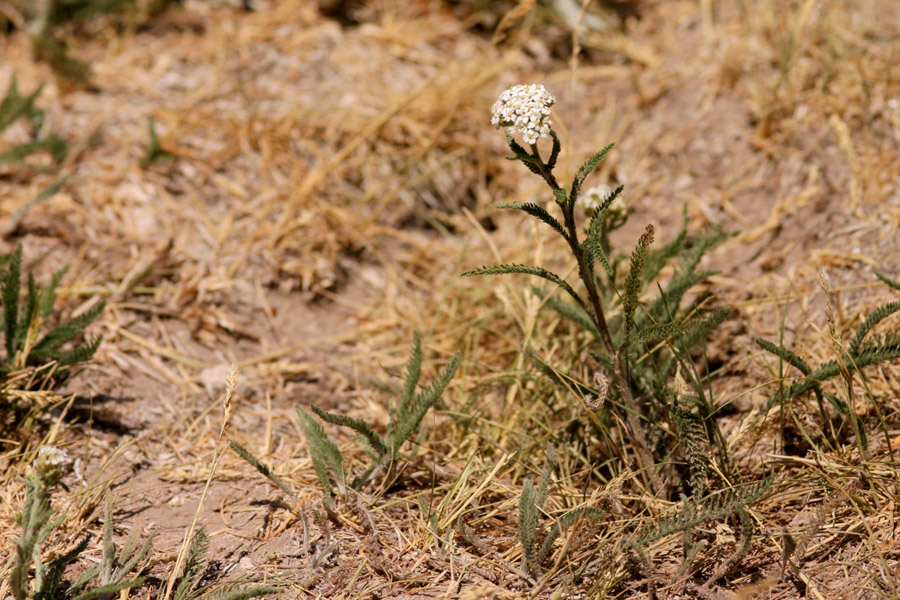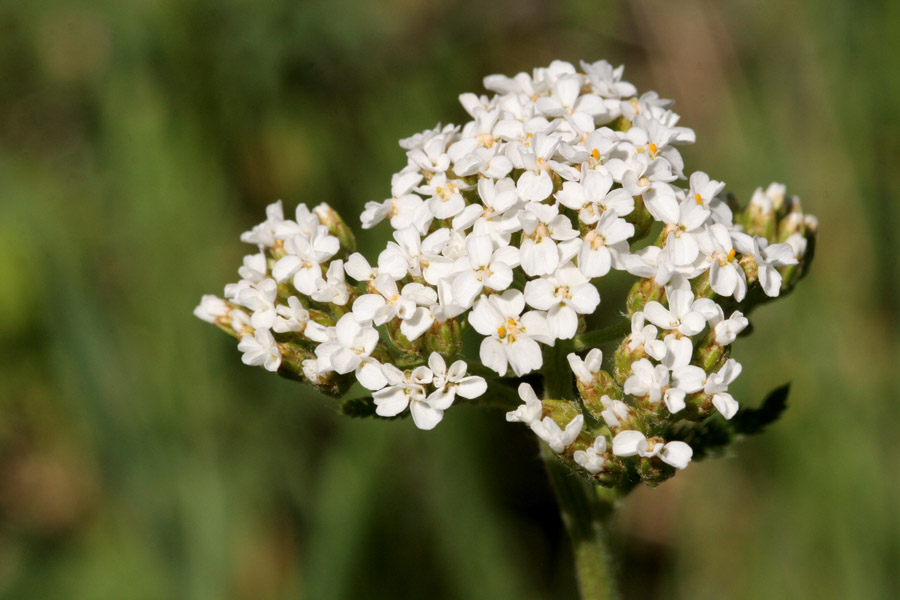Selected Plants of Navajo Rangelands
Western yarrow

Western yarrow is a native, herbaceous perennial in the aster family. It is a very common wildflower that grows erect from creeping rootstocks, to a height of 10 to 36 inches.
Western yarrow is a food source for bighorn sheep, pronghorn antelope, and deer. Sage grouse (especially chicks) and other upland birds rely heavily on the foliage of western yarrow as a food source. Domestic sheep and goats derive a fair amount of forage value from western yarrow, while cattle and horses mostly graze the flowerhead. The volatile oils, alkaloids, and glycosides are considered toxic, but the plant is seldom overgrazed by foraging animals. Western yarrow has been used as a tea to cure stomach ailments, a poultice on infected wounds, and as a mosquito repellent.

©2018 NMSU Board of Regents.
Individual photographers retain all rights to their images.
Partially funded by the
Western Sustainable
Agriculture Research and Education Program
(westernsare.org; 435.797.2257),
project EW15-023.
Programs and projects supported by Western SARE are
equally open to all people.